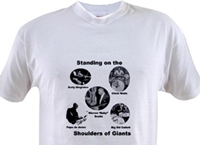
For one thing, Roy was an ubiquitous present on some of the iconic jazz recordings and performances, including Billie Holiday's early recordings led my Teddy Wilson, Anita O'Day's best known performances with Gene Krupa, and the birth of bebop at Minton's Playhouse. Although I am not going to drift into more about Anita, he performed with her at her 50th Anniversary in show business performance, Big Band At Carnegie Hall, reprising Let Me Off Uptown. That duet between Anita and Roy echoed the culturally groundbreaking performance they did with Krupa's band over forty years prior. Roy could no longer play his trumpet (for medical reasons), but his singing was strong, and he and Anita pulled it off perfectly.
Why is this set significant? Strictly speaking as a drummer, the musician styles covered and the various drummers included on the tracks will provide a lot of musical ideas. This is especially true if you are caught in a rut playing the same cliche licks (and we all succumb to that). It's also interesting to note that Roy started out on drums and played that instrument professionally until his brother convinced him to give trumpet a try.
As a musician, though, this is a wonderful collection of music and how it evolved during the period represented. And if you play trumpet, then knowing that Roy was influenced by saxophonists and not other trumpeters should expand your musical horizons.
Although he was active from the mid 1920s to the 1980s, this set captures some of his best years, spanning 1935 through 1953.
Up front the key questions you may have are: (1) how is the sound quality? (2) is this a typical hodge-podge of tracks thrown together to take advantage of expiring copyrights per European laws?
The answer to the first question is the sound quality is excellent. Even the early tracks circa 1935 are clear and probably better than the originals due to remastering. There are no popping noises associated with raw transfers from old shellac albums to CD. I am sure die hard purists and audiophiles will find some cause to complain, but I am more than pleased.
On the second question: this is a well thought out set, with each CD having a theme. Disc 1 is Swing is Here, Disc 2 is The Gasser, Disc 3 is King David in Paris and Stockholm Too and the final disc is Dale's Wail. What truly sets this collection apart, aside from the attention to logical grouping, is the 47-page booklet that is included. It is well written with a lot of Roy's history and the context of the tracks on each disc. But the real value is the comprehensive discography that lists each track on each disc, provides personnel and dates, and even label catalog information for each and every track. That is not the stuff of hastily thrown together compilations by fly-by-night labels.
The period covers his most important work (in my opinion), as well as his evolution as a musician that paralleled jazz itself. He was one of the few oldtimers (he was born in 1911) to make a successful transition from swing to bebop. He was a regular at the birthplace of bebop - Minton's Playhouse - and contributed musical ideas to that genre. More importantly, he was the idol and inspiration of Dizzy who was one of the architects of the new style. However, Roy continued to remain relevant as a jazz musician into the early 1970s. So this set of CDs show from where he came and to where he was ultimately headed.
Here are some selected clips that represent the music contained on the included discs:
And one not on the album that you may enjoy:



No comments:
Post a Comment